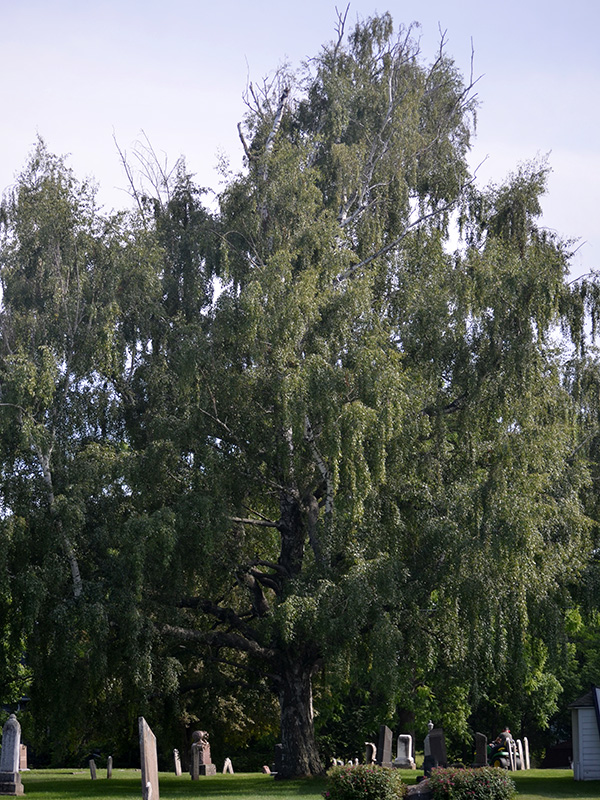| General Description | A very distinct tree with pendulous branches and leaves. One of the most commonly planted ornamental birch cultivars in North America. |
| ID Characteristic | A slender tree with white bark and rough warty shoots. Has drooping branches with deeply cut, long, diamond-shaped leaves. |
| Shape | Oval pyramidal with pendulous branching habit. |
| Landscape | While once very popular for front and back gardens, a more suitable alternative such as Betula nigra or Acer griseum is recommended. |
| Cultivation | Transplants easily but should be moved in the spring. Needs a lot of moisture but site should be well drained. |
| Pests | Bronze birch borer and birch leaf-miner. |
| Notable Specimens | Port Burwell, Ontario, Canada. |
| Habitat | Horticultural origin. |
| Bark/Stem Description | Brownish when young turning to white with age with black fissures. Does not exfoliate as much as Betula nigra. |
| Flower/Leaf Bud Description | Imbricate, curved, pointed, brownish black. |
| Leaf Description | Leaf is pendulous up to 7.5 cm long, lobed lanceolate, within .5 cm of the midrib, coarsely toothed with long slender points, the end of the basal lobes curve backward. |
| Colour Description | Glossy green during summer turning to a pale yellow in the autumn. |
| Texture Description | Medium-fine leaf texture, medium bark. |
